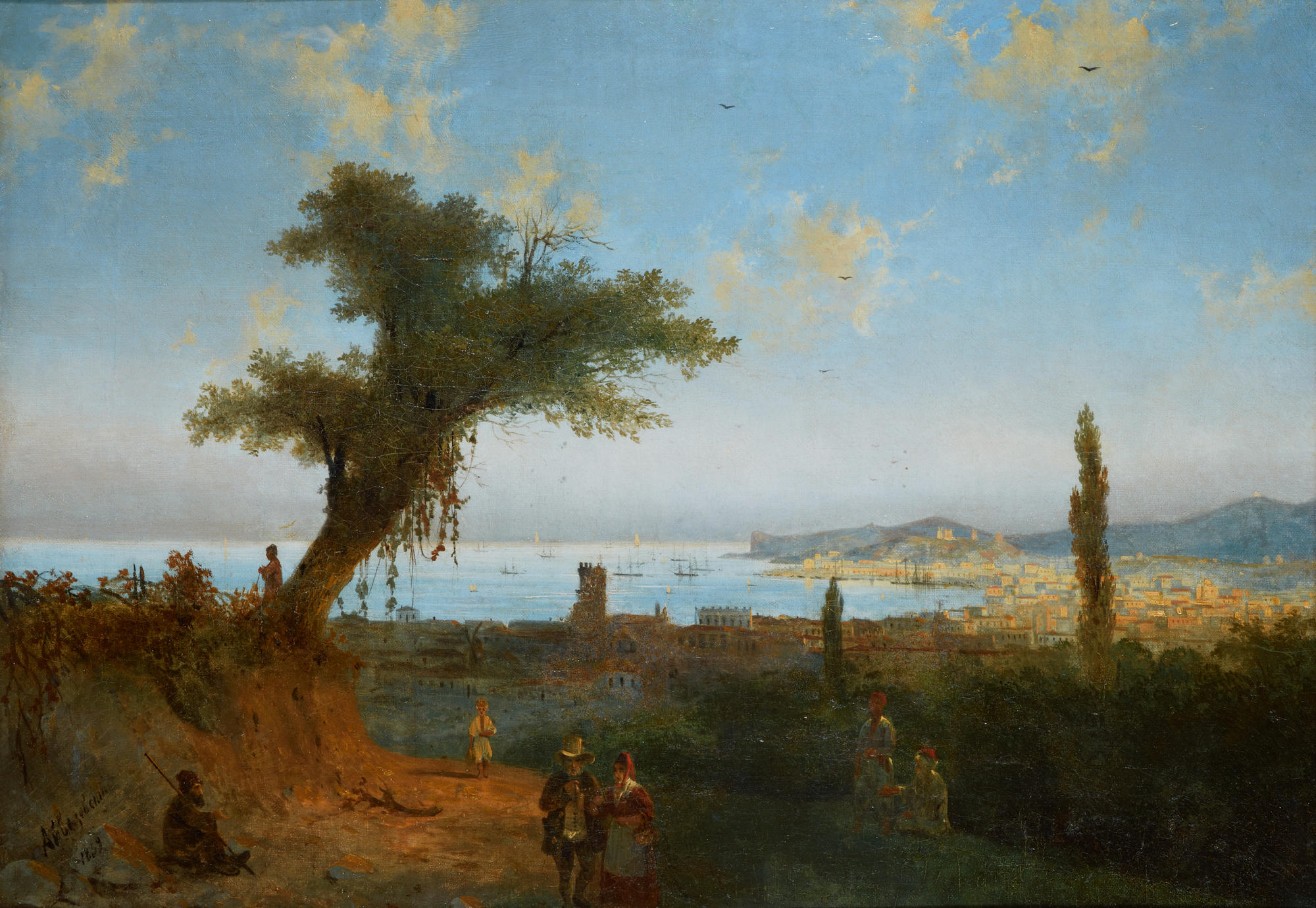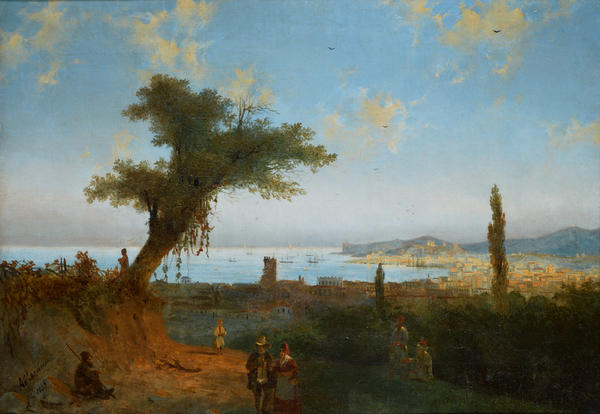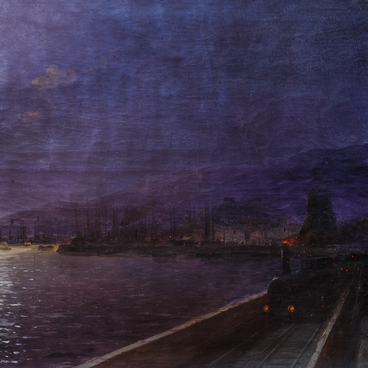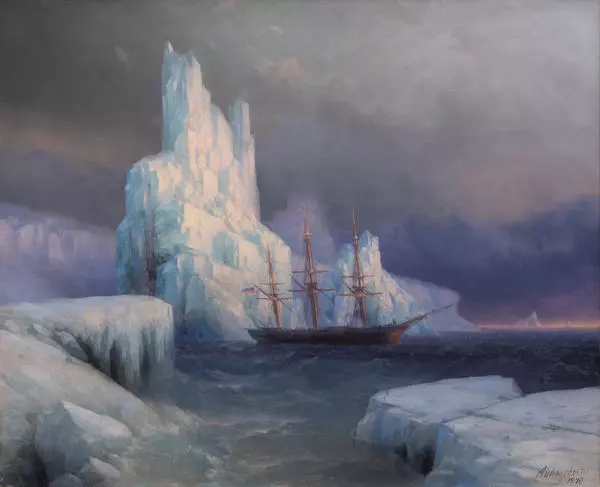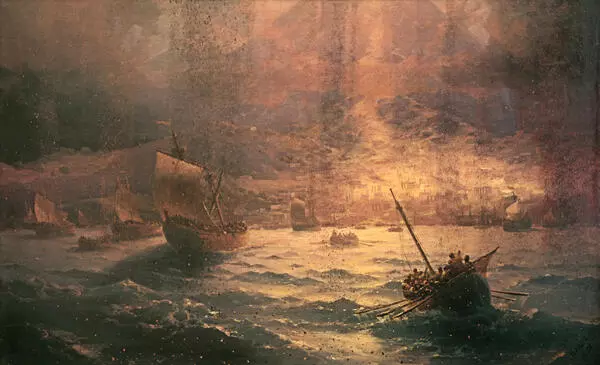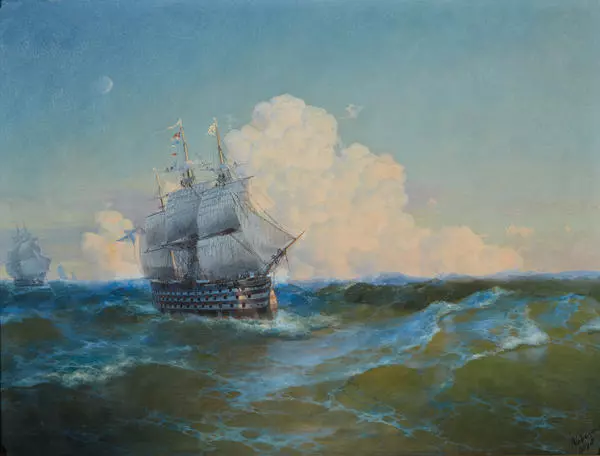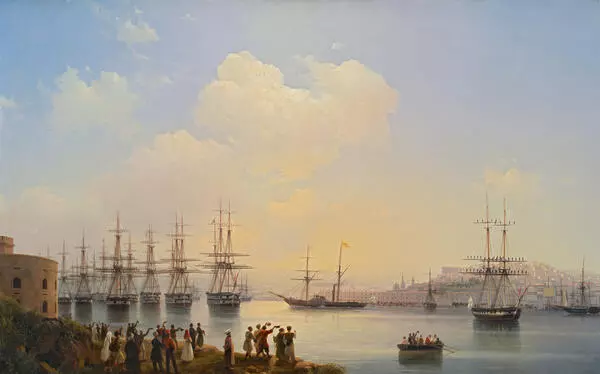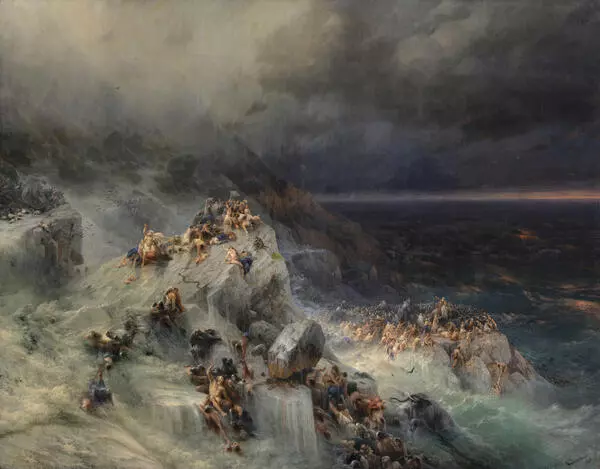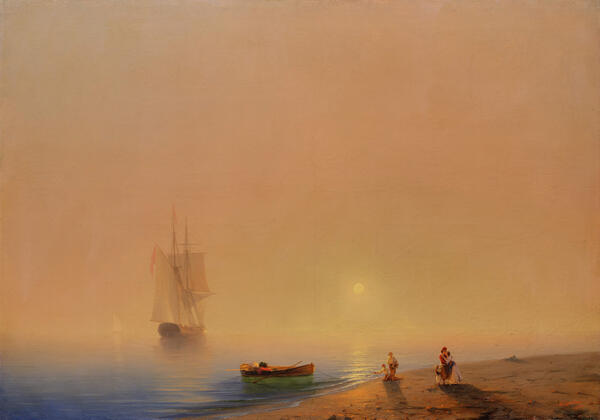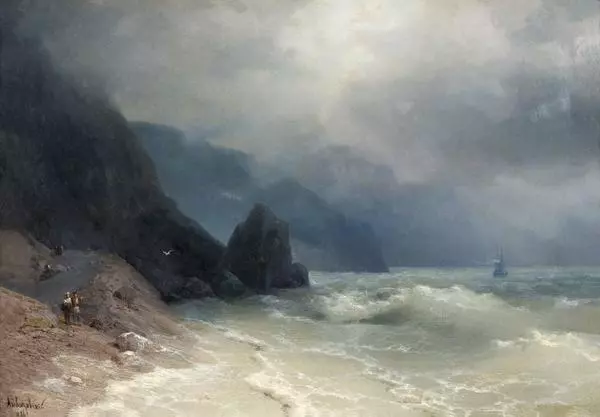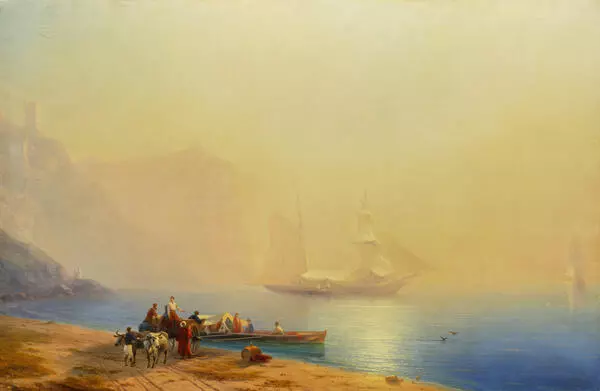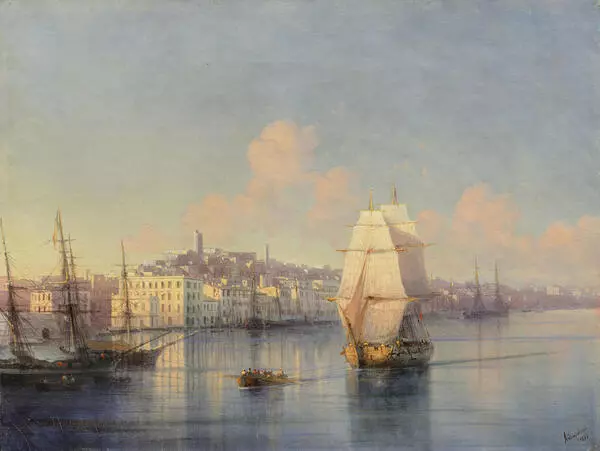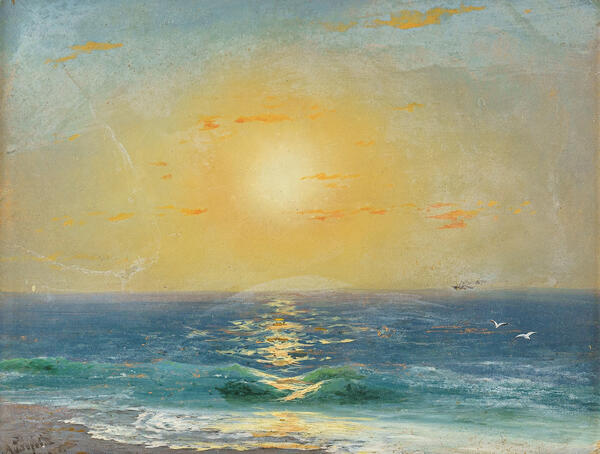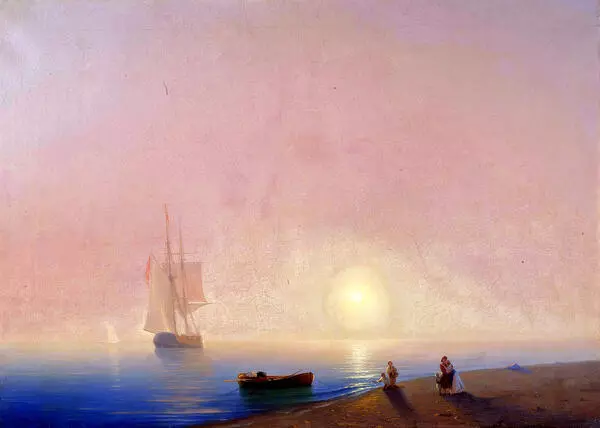Ivan Aivazovsky was very fond of his native town and used to say that he could live anywhere in the world but preferred Feodosia to other places. The most prominent of his works appeared on the shores of the Black Sea. Most of his creative ideas were inspired by these views. In 1845, the painter returned to Feodosia from St.-Petersburg with the intention to stay forever. He believed that he could create the best conditions for painting in his native town. So, he had a house and a studio built where he spent his entire life. In 1846, Aivazovsky launched his first exhibition in Feodosia and, in almost forty years, opened in his house Russia’s first public picture gallery.
Aivazovsky did a small painting The Old Feodosia during his years in the Academy of Arts when he spent most of the time in St.-Petersburg coming back home only for the summer months. In that period, he was very much guided by the work of his beloved teacher Mikhail Vorobiev, whose influence is especially noticeable in this painting. In many respects, The Old Feodosia was the result of creative development of Aivazovsky’s art skills in his early years as a painter. Gradually, he was becoming a master himself. In this work, the artist wanted to share his impressions of the town and his vision of the Crimean nature.
Aivazovsky painted Feodosia from the top of Mount Mithridat, the view the artist had when he lived in his parents’ house on the outskirts of the town. The colours in the painting are rather sombre. The focus of the artist’s attention is on the seaport, orchids, and a slim silhouette of St.Constantine’s Tower. Aivazovsky scholars point out the true-to-life nature of this painting. In that period, the artist often drew from nature finishing his work in the studio. Such an approach allowed him to convey his personal impressions of the townscape. Later on, at this place on the top of Mount Mithridat, Aivazovsky would have a new building of the Feodosia Museum of Antiquities built at his own expense.
Aivazovsky did a small painting The Old Feodosia during his years in the Academy of Arts when he spent most of the time in St.-Petersburg coming back home only for the summer months. In that period, he was very much guided by the work of his beloved teacher Mikhail Vorobiev, whose influence is especially noticeable in this painting. In many respects, The Old Feodosia was the result of creative development of Aivazovsky’s art skills in his early years as a painter. Gradually, he was becoming a master himself. In this work, the artist wanted to share his impressions of the town and his vision of the Crimean nature.
Aivazovsky painted Feodosia from the top of Mount Mithridat, the view the artist had when he lived in his parents’ house on the outskirts of the town. The colours in the painting are rather sombre. The focus of the artist’s attention is on the seaport, orchids, and a slim silhouette of St.Constantine’s Tower. Aivazovsky scholars point out the true-to-life nature of this painting. In that period, the artist often drew from nature finishing his work in the studio. Such an approach allowed him to convey his personal impressions of the townscape. Later on, at this place on the top of Mount Mithridat, Aivazovsky would have a new building of the Feodosia Museum of Antiquities built at his own expense.
